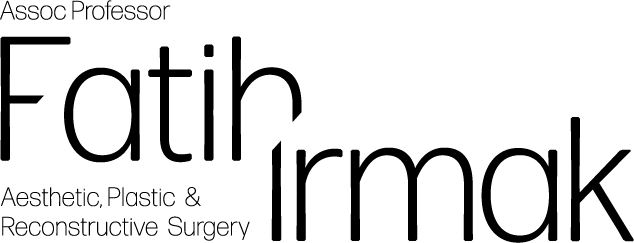Tummy Tuck - Abdominoplasty
Tummy tuck (abdominoplasty, tummy tuck) is the removal of excess fat and excess sagging skin in the abdominal area, and in many people, it also provides a smoother and firmer appearance by tightening the weakened and separated muscles that form the abdominal profile.
Many people aim to get a flatter and firmer stomach through exercise and diet. But sometimes exercise and diet alone are not enough. Exercise and diet have a limited effect on sagging abdominal skin, the most effective treatment for stretch marks and sagging skin under the belly due to weight gain and pregnancy tummy tuck (abdominoplasty).
The most common causes of abdominal irregularities; aging, genetic factors, pregnancy, previous surgery and a history of irregular weight gain and loss.
Abdominoplasty is not a weight loss operation. The main indication is minimal abdominal fat with sagging abdominal skin.
Sagging in the abdomen can sometimes be so much that it negatively affects the social life of the person, making it difficult to wear pants, skirts, swimsuits and bikinis, and sometimes excessive sagging can cause complaints such as skin wounds and fungal infections as a result of excessive sweating.
Although the result of tummy tuck operations is permanent; continuing to gain and lose weight prevents this permanence from occurring. Therefore, those who continue to lose weight and plan to have children later should postpone this operation.
Tummy tuck The operation is not an operation to correct stretch marks that occur on the skin due to weight gain and loss. However, if these stretch marks are above the skin to be removed, they are corrected by removing excess skin, and the scars on the belly become less visible due to stretching.
The most suitable candidates for tummy tuck surgery;
- Physically healthy and stable weight
- Having realistic expectations
- No smoking
- The appearance of the abdominal area disturbs the person.
How is Tummy Tuck Surgery Performed?
Tummy tuck surgery is often insufficient for the correction of adipose tissue on the sides - in the areas towards the back - that cannot regress with diet. In this case, more optimal results are obtained if combined with liposuction.
The operation takes 3 hours on average and usually requires general anesthesia. Hospitalization for 1 or 2 days may be required.
It's a complete tummy tuck In the operation, since the skin will be planned in a taut manner and the scar will remain in the bikini-underwear, the location of the belly button may also need to be rearranged.
Full abdominoplasty: It is preferred for those with excess skin and subcutaneous fat tissue both below and above the navel. At the same time, the loosened abdominal tissue muscles and envelope are repaired and tightened, and the belly button is relocated.
Mini tummy tuck (mini abdominoplasty): If the flabbiness and subcutaneous fat is localized only under the navel, the excess tissues are removed with a shorter scar and without changing the location of the belly button. Subsequently, muscle and muscle envelope repair can be performed.
Fleur-de-lis abdominoplasty: Especially in patients with excess skin in the midline as a result of excessive weight loss, excess skin is removed through both horizontal and vertical incisions in an inverted T-shape. With this technique, skin and subcutaneous fat tissue that cannot be removed with classical abdominoplasty is removed. It is a frequently preferred surgery especially after obesity operations such as type stomach, which has recently increased in number of applications.
What Happens After Tummy Tuck Surgery:
Dressings and bandages are applied over the suture line during healing. Bandages or corsets are an important application in terms of both resolving the edema faster and supporting the abdominal area during healing.
Drains prevent the accumulation of excess blood and fluids due to surgery in the body and allow them to be expelled and are not removed for several days after surgery.
In the early postoperative period, you should not stand fully upright. Staying in a semi-reclined position for an average of 2-3 weeks not only allows the suture line to heal more smoothly, but also prevents the smooth and taut appearance of the abdominal area from being damaged during healing.
Early results of the surgery are seen after 2-3 weeks on average.
It is one of the most successful operations of plastic surgery and the result is satisfactory even in the early period.
But previous surgeries (such as gallbladder surgery performed with open technique) tummy tuck may prevent the results of their operations from being optimal.
Things to consider before and after tummy tuck surgery:
Doing a bowel cleansing before surgery, i.e. eating only liquid food for a few days and using bowel cleansing medications, helps your doctor to fully repair your abdominal muscles during surgery. After the operation, continuing your watery diet for a few more days and avoiding gas-forming foods and drinks will increase your postoperative comfort.
This surgery can give your abdomen a near-perfect shape, but it is inevitable that you will have a scar that is longer - on average twice as long - as the cesarean section scar.
The more saggy and fatty your abdomen is, the longer the scar will be.
Remember that this operation is the most laborious operation for the patient among plastic surgery operations. Due to the repair of your abdominal muscles in the midline, you need to lie in a tilted-not fully upright position for days after the surgery and stand leaning forward, set yourself a suitable period when you cannot work for 2-3 weeks and have the surgery on that date.
The aim of this surgery should not only be to treat the sagging abdomen, but also to rejuvenate the waist and groin. Ask your plastic surgeon about this.
Smoking after surgery can cause serious problems with your skin. Do not smoke. All surgery plans are made with the assumption that you will not smoke. If you change the rules, you can upset the balance.
What are the risks of tummy tuck surgery?
Tummy tuck operation scars; In women who have had a cesarean operation, it looks like a continuation of the cesarean scar on the sides. And it may take months or even a year for these scars to heal completely. The prominence or better healing of these scars is determined by the person's skin color, genetic characteristics and predisposition to scarring.
Risks other than the trail;
- Risks related to anesthesia
- Bleeding
- Infection
- Fluid accumulation in the surgical field (seroma)
- Poor wound healing
- Skin loss-necrosis
- Loss of sensation-numbness of the skin
- Extendable edema
- Loss of skin tension
- Fat tissue death-necrosis due to malnutrition of adipose tissue
- Asymmetry
- Non-optimal aesthetic results
- Deep vein thrombosis, heart and lung complications
- 2nd - 3rd possibility of operation (revision)
Sexual intercourse after tummy tuck surgery
Sexual intercourse is allowed 2 weeks after the operation.
Can I get pregnant after abdominal aesthetics?
Tummy tuck operation does not prevent pregnancy. If you become pregnant, it does not cause any problem during pregnancy. However, since it will loosen again after birth, the ideal is actually to perform the operation in the period after the pregnancies are completed.
When can I have tummy tuck surgery after giving birth?
Abdominoplasty should ideally be planned at the end of the 1st year after delivery. During this period, the mother gets rid of excess weight and the degree of belly sagging becomes clear.
Tummy tuck surgery prices
Tummy tuck surgery The prices vary from person to person. The physical condition of the patient, whether the patient has had surgery before, the experience and skill of the physician in this area tummy tuck are the most important factors determining their prices. Please contact us to get an idea about prices.



